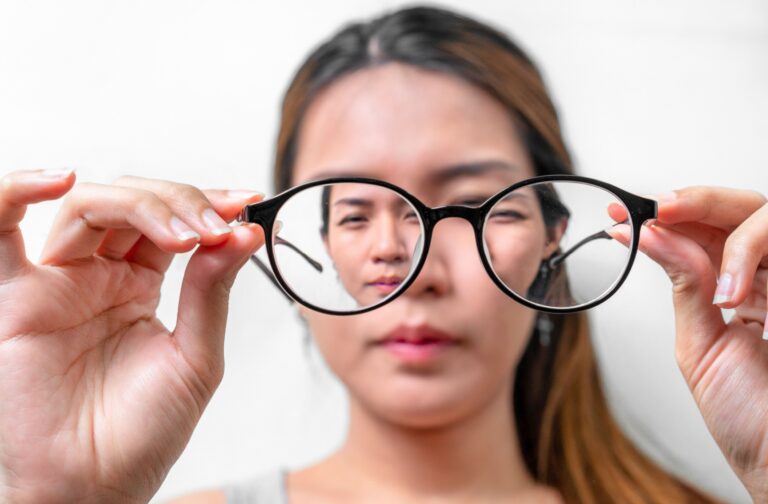Table of Contents

Introduction
近视眼有遗传性吗?
Myopia, or nearsightedness, is a common vision error that makes distant objects blurry. According to the International Myopia Institute, the condition affects approximately 30% of the US population, and its prevalence is increasing globally.
Many people wonder if myopia is genetic or if it can be inherited from parents or other family members. The short answer is yes, genetics can play a role in myopia development. However, other environmental factors can contribute.
Genetic Factors Affecting Myopia
Myopia is a complex condition with multiple contributing factors. While genetics put you at a higher risk for developing myopia, it is not completely responsible for the development of myopia.
Family History & Genetics
Studies have shown that individuals with a family history of myopia are more likely to develop it as well. This is due to genetic predisposition, meaning specific genes can increase the risk of myopia.
Having one parent with myopia doubles your risk, and having 2 parents with myopia increases the risk by 5 times.
Specific Genes Associated with Myopia
Research has identified several specific genes associated with myopia development. These include genes that contribute to eye growth and development, such as those related to the size and shape of the eye.
One gene in particular, “gene 4q25“, has been linked to severe myopia. This gene is responsible for regulating the growth of the eye, and mutations in it can lead to eye elongation, causing nearsightedness.
Environmental Factors Affecting Myopia
While genetics play a significant role in myopia development, there are also environmental factors that can contribute to its onset.
Excessive Near Work
Lack of Outdoor Time
Other Factors
How to Prevent Myopia
While there is no guaranteed way to prevent myopia, parents can take steps to help reduce their child’s risk and manage the condition if it does develop.
Encourage Outdoor Time
Monitor Screen Time
Take Children for Routine Eye Exams

Myopia Control Methods
Atropine Eye Drops
For children who are at high risk or already developed myopia, atropine eye drops can be prescribed by an optometrist. These eye drops help relax the muscles in the eye and slow myopia progression.
Orthokeratology
Orthokeratology (ortho-k) uses custom-fitted contact lenses worn overnight to temporarily reshape the cornea, which improves vision during the day and slows myopia progression.
Abiliti Overnight Vision Correction
Abiliti Overnight Therapeutic Lenses are FDA-approved ortho-k contact lenses. They’re designed to be safe and comfortable for children.
Euclid Lenses
Euclid lenses are FDA-approved contact lenses to help slow the progression of myopia. The lenses are made specifically for your child’s unique eyes and are designed to be worn overnight to gently reshape the cornea. Once removed in the morning, your child should have clear vision all day.
CRT Lenses
CRT (Corneal Refractive Therapy) lenses offer a non-invasive solution for myopia control. These specialized lenses are worn overnight, gently reshaping the cornea while sleeping, allowing for clear vision during the day without the need for glasses or contact lenses. By temporarily altering the corneal curvature, CRT lenses aim to slow down the progression of myopia in children and adolescents.
Myopia Glasses
There are various glasses designed to help relax the eyes at reading and screen use to enhance myopia management efficacy. Ask our eye doctors what is best suited for you.
MiSight Soft Multifocal Lens
MiSight 1 day lenses are FDA-approved and clinically proven to reduce myopia progression. They feature a bullseye-shaped design. The central zone corrects vision, while the outer rings help manage light focus within the eye to help reduce myopia progression.
Eyeglasses
Your child’s optometrist can also prescribe myopia-control eyeglasses. They use multifocal lenses with a center zone (sometimes the upper half of the lens) for single vision correction and an outer zone (sometimes lower zone) to refocus peripheral light and slow myopia.
Myopia Control Solutions at Golden Vision Optometry
While there is no cure for myopia, several effective myopia control methods are available. It is essential to consult with an eye care professional to determine the best treatment option for your child.
Golden Vision Optometry offers several options for myopia control. Our team of experienced optometrists will work closely with you and your child to create a personalized treatment plan that suits their needs and lifestyle.
Book an appointment today.

